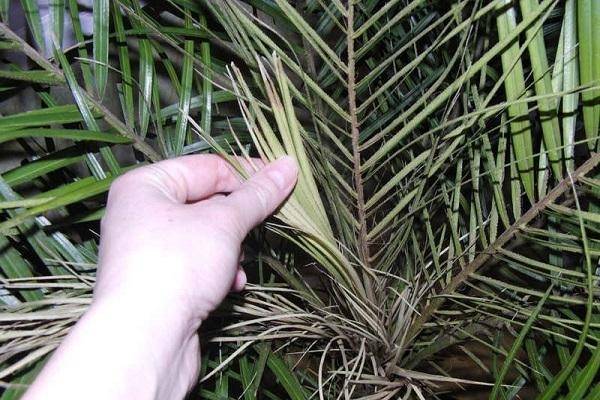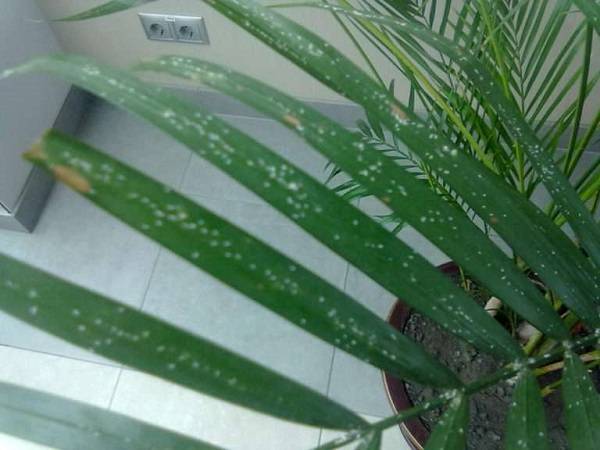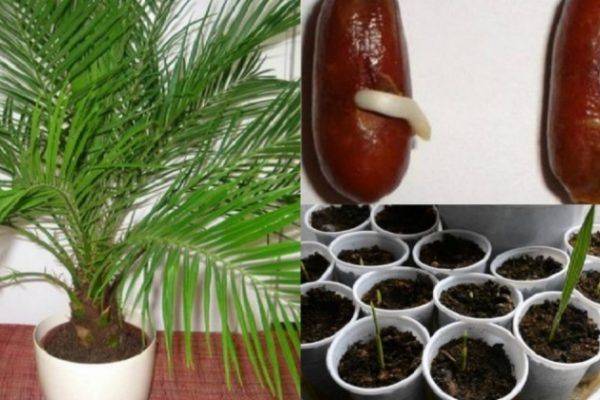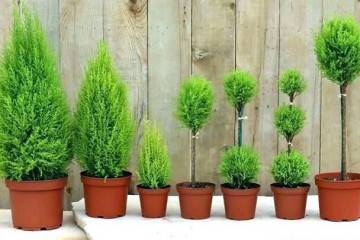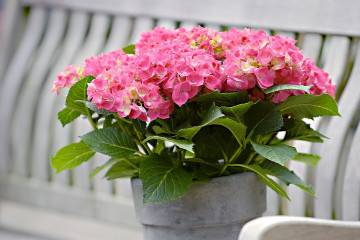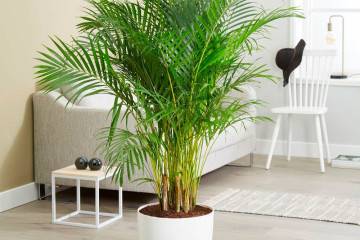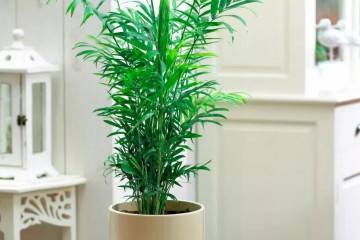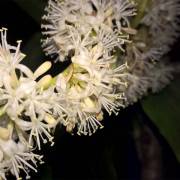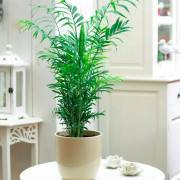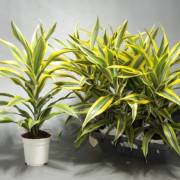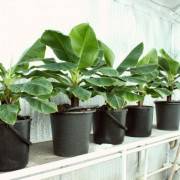How to care for a palm tree at home
Content:
Palm trees are exotic "beauties" that instantly transform the home interior and bring the atmosphere of the tropics, recalling the seaside and relaxation. There are many types of palm trees, among which you can choose the one suitable for interior decoration. Among the plants there are bushy, and single-stemmed, and with a varied form of foliage. In natural conditions, palms can grow up to several meters in height.
How to care for a palm tree at home
Many people refuse to buy a tropical plant because they simply have no idea how to care for a palm tree. There are also many superstitions that a flower will grow well only with the "light" hand of the owner. There are no grounds for such statements, therefore, if you wish, you can and should purchase your favorite palm tree, home care is not difficult.
To grow a plant at home, you need to provide it with enough space. The palm tree does not like close proximity to other representatives of plant culture. Many intuitively place them separately from other indoor landings. The palm tree needs space. The most comfortable conditions are greenhouses and winter gardens.
Choosing a place: temperature and lighting
For most palm trees, lighted locations with ample daylight are preferred. Placing the pot in the shade is not suitable for everyone: the foliage becomes faded, the size of the leaves decreases. However, there are also varieties that develop normally in shady conditions.
Watering and humidity
In places where palm trees grow, the level of humidity and temperature is predominantly high. Therefore, when growing a house, it is required to systematically water the tree to keep the soil moist, without overflowing.
What to do in case of overflow? It is necessary to immediately take measures so that the decay process does not begin. In this situation, it is required to replace the land with a new one. You need to put drainage in the pot and be sure to put it on a pallet. The sump is necessary to collect excess water, which, when exposed to high temperatures, will simply evaporate, creating an atmosphere of high humidity around the plant.
In summer, the palm tree needs frequent watering. In winter, soil moisture is reduced, especially when the room becomes cool and damp. If the temperature is maintained at +22 degrees and above, you can continue to water more often. This microclimate is similar to the spring-summer period.
The palm tree loves humidified clean air. This is a condition that must be observed in order to ensure proper care of the palm tree at home. To maintain humidity, sprays are done daily. With high humidity in the apartment, watering and spraying is not necessary. Often spraying occurs in the spring and autumn, when the heating is already off, and the temperature outside the window is low, not higher than +13 degrees.
Soil selection
The plant needs light, breathable soil that easily allows water to pass through when watering, without holding it back or turning into a lump. Another important point in how to care for a home palm is the composition of the soil. The correct soil, if over-watered, will allow water to flow into the sump.
You can find a suitable soil in a specialized store. Palm soil is often available and works well for planting. Therefore, do not waste time and effort and make the substrate yourself. Already prepared soils are suitable for all types, this has been tested by many growers in practice.
Drainage can be done independently by mixing river sand with fertile soil and humus (1: 2: 1). The procedure is simple, and a novice florist can handle it.
Fertilization and feeding
For the first two weeks, the newly acquired palm is not fertilized or transplanted. She needs to be left alone for a while so that she can adapt without problems to the new environment.
After 14 days, it is already allowed to make the first fertilizing, after having thoroughly moistened the soil. Palm loves complementary organic food. It is obtained as a result of the natural process of decay of parts of different plants. On the South American and South African continents, this fertilizer is the "green" that covers the surface of the soil, which eventually decays and becomes a fertilizer for the palms.
To feed the palms, you can purchase chicken droppings in granular form, which are completely odorless and look like tree sawdust. This is an effective complementary food for exotic plants from April to October, when there is intensive growth and development.
When buying fertilizers from different manufacturers, you must carefully read the instructions for use, especially with regard to dosages, and follow these recommendations.
Leaf problems - determining the cause and fixing
The decorativeness of the palm tree is in its green, rich foliage, which pleases the eye throughout the year. For this reason, when the greenery begins to lose its beautiful appearance, the owner involuntarily wonders why the leaves of the palm tree turn yellow.
There are several answers to this question. First of all, yellowing of foliage can be a natural process that has nothing to do with disease or inappropriate care. It's just that it's time for the leaves to wither and fall off, because their lifespan has come to an end. This is normal. In order to preserve decorativeness in this case, the yellowing parts are cut off.
Yellowing and drying of leaf tips
When yellowing of leaves at the ends of a palm tree is massively observed, you need to pay special attention to caring for the plant. Most likely, the reason why the foliage begins to dry is in improper care or inappropriate conditions.
Drafts are another reason why the tips start to turn yellow and dry out. In this case, you need to transplant the palm tree to another place or exclude the cause of the appearance of drafts. However, ventilation is necessary. Stale and dry air also leads to yellow foliage.
If there is no natural humidifier, spray from a spray bottle. For the procedure, take soft, settled water at room temperature. It is recommended to “bathe” the palm tree once every 7 days, removing dust from the leaves.
White bloom on the leaves
A common cause of white bloom on foliage is watering and spraying with hard tap water. As a result, all moisture evaporates, leaving residues of salts and lime on the green mass. This plaque clogs the pores and prevents the leaves from breathing fully. This leads to a loss of decorativeness. The general condition of the plant becomes worse, because it needs oxygen for development and health.
To avoid the appearance of plaque, it is required to choose a container for settling water from the water supply system and pre-collect water for irrigation there. After a few days, the impurities will settle to the bottom and you can safely use this water for irrigation and spraying.
Another reason is fungal infection. Favorable conditions for its development - excess water, dampness, coolness. For this reason, spraying is not carried out between seasons. When a fungal infection has already occurred, the affected plants are treated with fungicides, and the infected leaves are removed.
Breeding palms - instructions for growing
How a palm tree reproduces depends entirely on its type. For flowering varieties that form seeds, the natural method is by seed or seed. Non-flowering specimens reproduce exclusively vegetatively.
Vegetative propagation
For novice florists, it is of interest how a palm tree propagates in a vegetative way, when it has one single trunk. Even such a plant can be propagated vegetatively.
To do this, cut the upper part of the shoot, separating the bottom from the leaves. The handle is ready. It is placed in a pot of fertile soil. Humidification is carried out while maintaining room temperature.
Growing from pits or seeds
There is another, easier way to grow a new palm tree from scratch - plant a bone or seeds. You can buy them in specialized stores after carefully examining the packaging. It should indicate the germination of seeds, the year of packaging, what is the shelf life and other useful information.
Only fresh material is suitable for palm propagation. Therefore, seeds, seeds that are more than two years old should not be purchased.
Step-by-step instructions on how to grow a palm tree:
- Carefully make an incision on the planting material. As a rule, the coat of seeds and pits is dense.
- Placed in warm water and wait for the seeds to swell. To make germination more, water is changed daily for fresh water.
- After swelling, the seeds are planted: they are buried in the ground, watered, and covered with a film on top.
- When sprouts appear, the shelter is removed.
Choosing a pot or tub for replanting a palm tree
It is preferable to purchase a pot for a palm tree from natural materials. It is such a container that will ensure the delivery of the required amount of air to the root system. Thanks to this, the likelihood of rot is reduced at times.
A plastic pot is also suitable. In it, the plant can also develop successfully. Only the care of a tree in such a container should be more thorough: it is necessary to ensure frequent weeding and loosening to allow the roots to breathe.
The large tree tub is ideal for an already mature plant. You can transplant a palm tree into it, which has become cramped in the old place. However, there is a peculiarity of how to transplant a palm tree at a young age: only those containers that are suitable in size for the root system are suitable.
A palm tree in the house is a great way to decorate the interior, as well as improve the composition of the air by filling it with oxygen.The appearance of an exotic plant will bring warmth and comfort, create a relaxing and relaxed atmosphere. From various species, you can make the most real "home" tropics. Palm tree care is simple. It will not be difficult for a novice florist to grow an evergreen tree at home.



